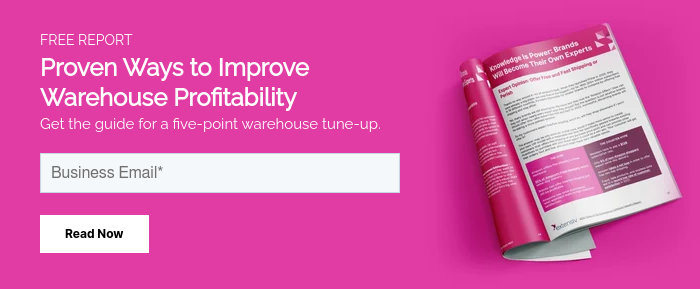Supply chains have grown more complex over time. There’s no end to all of the different challenges that warehouse managers face from manufacturing in-house and maintaining multiple locations.
Production planning is one beneficial way of getting ahead of the rush and having a good understanding of your supply chain management and strength.
Waiting for a rush of orders to disrupt your warehouse flow should never be an option. Use these production planning tips to improve your warehouse planning.
How Does Production Planning Work?
Production planning is the process of efficiently coordinating resources, activities, and processes in manufacturing to meet customer demand. It begins with demand forecasting and aligns production with sales plans through sales and operations planning (S&OP). The plan considers resource availability, schedules production tasks, manages inventory, and incorporates quality control measures.
Capacity planning ensures production aligns with manufacturing capabilities, while risk management addresses potential disruptions. Continuous monitoring allows for real-time adjustments, and the process fosters continuous improvement. Production planning aims to optimize production efficiency, cost-effectiveness, and customer satisfaction, making it a vital aspect of supply chain management.

Benefits of Good Production Planning
There are a few key benefits that come with good production planning.
- Improved customer service: When you can accurately forecast production needs, you can better meet customer demand and avoid stockouts.
- Increased production efficiency: A well-planned master production schedule prevents bottlenecks and allows for a smooth workflow through the warehouse.
- Reduced production costs: A good production planner will optimize the production process, reducing waste and ensuring that resources are used in the most efficient way possible.
Key Methods of Productions Planning
One of the most important production planning tips is to communicate your production plan to all parties involved.
Your production planning team should work closely with purchasing, operations, quality control, and sales teams to create an effective production schedule.
Ongoing communication about changes or disruptions within the supply chain is critical for production planning.
Job Method
Specific to manufacturing a single product, the job method production planning is a production-oriented plan that uses routings to define the sequence of operations and tasks required to manufacture a product.
The job method production plan starts with the finished goods and works backward, defining each operation and task needed to produce the final product.
This type of production planning is common in batch and repetitive manufacturing environments with single products and smaller warehouses.
Batch Production Method
Batch production refers to individual products produced in batches or groups specific to a single product. In this type of production, products are made to order and typically in varying quantities.
Operations within a batch production environment will generally have some common characteristics:
- The same product is produced over and over again
- Operations are usually done sequentially
- There is often a lot of setup time required between each batch
Flow Method
This method is based on the continuous production of large quantities of one or more products. Flow production refers to the continual production flow and uses assembly lines, conveyors, and other automation tools. Systems are closely monitored using an OEE calculator and similar tools to ensure operations run efficiently.
Flow production typically requires less setup time than batch production methods because there is no need for multiple setups between different production runs.
Process Method
The production planning process is closely aligned with the production scheduling of jobs. Production planners determine which steps come after, how they should be processed, and the production rate.
Production planners work to determine when each step will be processed and how many staff are needed for each step in production scheduling.
This method is common in businesses with a high mix of products and frequent changes to the production schedule.
Mass Production Method
A production planning approach that uses standard routings to produce products in large quantities is known as mass production.
This type of production planning is common in businesses with low product variety and high demand.
In mass production, the goal is to produce as many product units as possible while maintaining quality standards.

How to Choose the Best Production Plan
Most obviously, the type of product you’re producing and the most appropriate production process will impact the production planning method you choose.
Here are some factors to consider as you determine what production plan is best for you.
The Level of Demand
One key question to ask yourself when choosing the right production plan is whether or not your products experience a high volume of orders. Flow production may be the best option to maintain production levels if products are constantly in demand.
The Number of SKUs That Will be Produced
The more unique products you produce, the less likely job or batch production planning will be effective. In these cases, process or mass production methods are better suited for producing large quantities of products.
How Many Steps to Production Are There?
Another important factor to consider when choosing a production plan is whether or not there are multiple production steps required for each product. If so, you’ll want to know if the production processes can be performed simultaneously or sequentially. The decision on how to produce your SKUs will depend heavily on this information.
The Level of Variability in the Production Process
If production processes are highly variable, it can be difficult to use batch production planning. In this case, flow production is often a more effective option because it allows for greater flexibility and faster changes to production schedules.
The Skill Level of Your Workforce
If your workforce has limited production skills or production is performed by untrained workers, your planning will be different than if you’re working with a skilled labor force. Many companies find that process production planning is a good option because it allows for better control of production lines and minimizes the need for highly skilled labor to perform complex steps.
Steps to Creating Your Production Plan
Now that you have a better understanding of the different production planning methods and how you’ll choose the right method for you, it’s time to create your own production plan.
The following steps will help you develop a production plan that meets the specific needs of your business.
1) Gather Estimates and Forecasts of Product Demands
The first step in production planning is to gather data on estimated product demand. This information can come from sales forecasts, customer surveys, or other market research sources.
Once you have an idea of the level of demand for your products, you can begin to plan production around these estimates.
2) Assess Current Inventory Levels
Inventory data is also essential for production planning. You need to know what inventory levels are currently available and how much stock you’ll need to produce your estimated product demand.
This information will help you determine the production schedule and identify any potential bottlenecks in production.
It’s important to note that not all products can be produced in large quantities. If you have products only produced in small batches, production planning will need to take this into account.
3) Plan and Determine Needed Resources
The next production planning step is determining production capacity, overall production costs, and the required resources. This includes equipment, raw materials, and labor. Once you have an idea of what’s needed, you can develop a production plan.
Many factors will impact production capacity, including the number of products being produced and the level of demand.
4) Monitor Production Levels and Plan Release Dates
Monitoring production levels and planning release dates is the next step in your process. This will ensure production is on track and running smoothly. You should also set goals and track key performance metrics (KPIs) for production, such as the number of products to be completed per day or week.
These production planning steps can help your business run more efficiently and ensure products are delivered to customers on time.
5) Make Adjustments to Improve Production for the Future
Finally, production planning should include an evaluation of production processes and assessing how production was managed during the process.
This information can be used to make production methods or equipment changes for future product runs. This helps you avoid issues that occurred in previous production runs, saving time and money down the road.
Get the Help You Need With a Quality Warehouse Management System
At Extensiv Warehouse Manager, we offer topShelf–a premium warehouse management tool that can help you keep your business on track.
From employee tracking to inventory control and stocking, you’ll get all the help you need to ensure that your business runs smoothly and your team keeps fulfilling production orders at a record pace.
Choose Extensiv Warehouse Manager for your inventory management needs, and you’ll get a team of experts to guide you and get your new inventory management system up and running.








